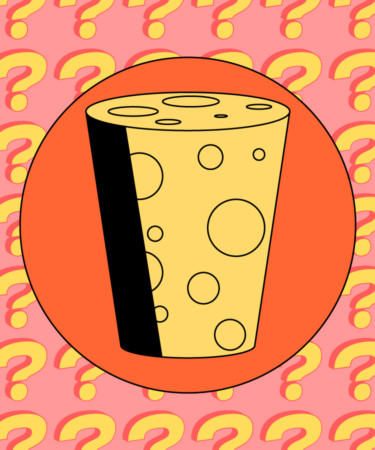The hard part is over — or so you thought. You chose and ordered an exciting bottle of wine from a restaurant’s list, your sommelier or server has brought it over to your table, and now it’s almost time to drink up.
But first, there’s a brief moment of confusion. The server takes the cork out of the bottle and holds it out to you, inviting you to do… something. The only problem is, you have no idea what that something is. Now what?
Keith Beavers, VinePair’s tastings director and “Wine 101” host, gives his insight as to what you should do if you’ve ordered a bottle of wine and your server presents you with the cork. Here’s how to avoid in-the-moment panic and handle this common wine ritual like a pro (spoiler alert: you shouldn’t be smelling it).
If you’re wondering why guests are often presented with a cork in the first place, the answer lies in history books. “The tradition of presenting the cork started with humble beginnings, as a way to combat fraud back in the day,” Beavers says. “It was a way to prove that the château you were buying from was the château that was emblazoned onto the cork.”
Fast forward to modern-day restaurants, and corks are often still presented to diners who buy a bottle of wine. It’s a practice that’s done more for tradition’s sake than anything else, though. If you want to make sure the label on the cork matches the label on the bottle you ordered, go ahead and check it out. But there’s no real reason to believe there will be a mismatch; wine fraud has become increasingly less common as labeling practices have improved. Plus, your server is double-checking to make sure your bottle and cork match.
When a server extends their hand and a freshly popped cork lands in front of you, there’s a failsafe way to handle the situation. “If the cork is given to you, take it, say ‘thank you so much,’ and set it right down,” Beavers says. If a sommelier believes that the presentation of the cork serves some greater purpose, they might encourage you to pick it back up and give you instructions on what to do next. Most likely, though, once you’ve set the cork down, the job is done.
Some diners might be tempted to sniff the cork before they place it back on the table — a practice that, Beavers explains, can be used to see if a wine is corked. It might not be worth your time to do this, though. “There is no science to prove that smelling a cork is an indication of cork taint in the bottle,” he says. “There’s also this weird thought that smelling the cork is like smelling the wine. If you’re smelling the cork, you’re just smelling the wine soaked into an organic material that has its own aromas.”
Ultimately, once you’ve bought the wine, what you do with the cork is up to you. Sniff it if you really want to, take it home as a memento to remember the night by, or leave it at the table when you’re finished with your meal.
If you’re still worried you’ll botch the presentation of the cork, rest assured: “It’s a very small, dumb, fun little ritual that’s been filtered down through the ages,” Beavers says. “It’s just not really a big deal.”
So the next time a wine bottle reaches your dinner table, sit back, relax, and don’t fret about the cork too much. After all, it’s what’s inside the bottle that counts most.
